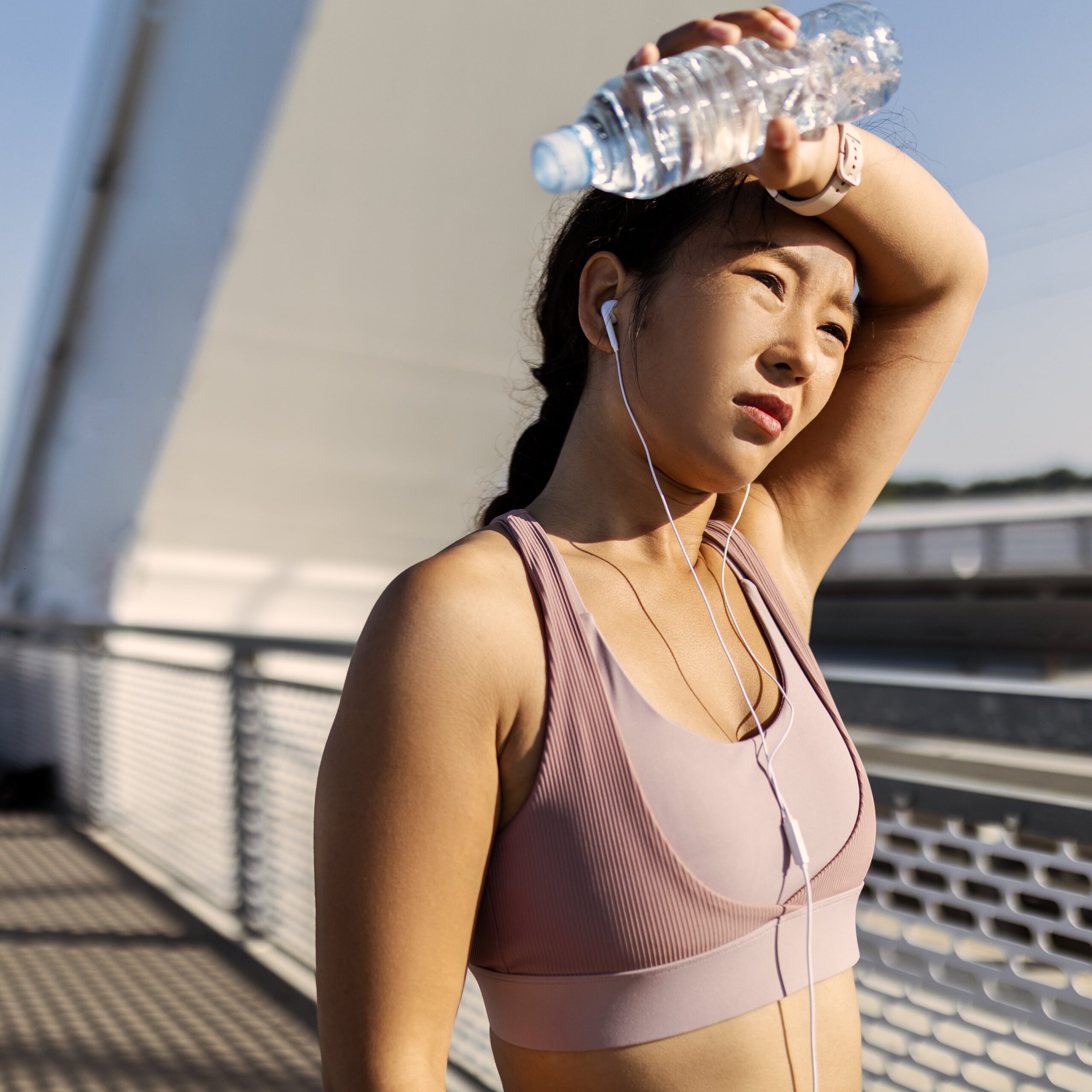
- POPSUGAR Australia
- Fitness
- You Can Actually Be Allergic to Exercise – and It Can Get Serious
You Can Actually Be Allergic to Exercise – and It Can Get Serious

Not everyone is a fan of exercise, and you’ve probably heard more than a few jokes from people who say they’re “allergic” to working out. But despite the quips, an exercise allergy is a real thing – and it can be serious.
The official name for this allergy is exercise-induced anaphylaxis, and it’s a rare disorder where someone develops a hypersensitivity to physical activity, leading to a life-threatening allergic reaction known as anaphylaxis, which can involve scary symptoms like trouble breathing.
The lifetime prevalence of experiencing exercise-induced anaphylaxis is about 0.05%. But it can and does happen – and it can develop later in life, even if you’ve never had issues working out before.
“There’s a lot we don’t know about exercise-induced anaphylaxis, including the mechanism behind why this happens,” says Roula Altisheh, MD, an allergist and immunologist with the Cleveland Clinic. Still, researchers and doctors in the field have learned how to properly diagnose the condition, as well as how to manage it. These are the biggest signs you might be dealing with exercise-induced anaphylaxis, plus what to do next, if you are.
What Is Exercise-Induced Anaphylaxis?
Exercise-induced anaphylaxis is “a disorder characterized by a range of symptoms occurring during exercise or physical activity,” says Peter J. Carek, MD, researcher and chair of the department of Family Medicine at Clemson University’s School of Health Research.
During an allergic reaction, a type of white blood cell in your immune system, known as mast cells, releases certain compounds, including tryptase and histamine. These compounds are what can cause symptoms of an allergic reaction, Dr. Altisheh says. In the case of exercise-induced anaphylaxis, something about physical activity causes the mast cells to release large amounts of these compounds, leading to severe symptoms that can even be life-threatening, she says.
What it is about exercise that triggers this response isn’t known. One study in the Journal of Asthma and Allergy notes that exercise increases gut permeability, and therefore may allow toxins to escape from the gut into the bloodstream, triggering the immune system and the mast cells. Another theory is that exercise causes blood flow to be directed from visceral organs to the muscles, skin, and heart, and that blood can carry allergens with it.
But in many cases, it isn’t exercise alone that causes an allergic reaction, but a combination of exercise and something else. For instance, there’s also a variant of the condition known as food-dependent exercise-induced anaphylaxis. In this type, people only experience a reaction if they exercise within three or four hours of eating a specific food, such as wheat, shellfish, or nuts, Dr. Altisheh says. As many as 30 to 50 percent of exercise-induced anaphylaxis cases are food dependent, according to the journal Canadian Family Physician.
In other cases, a person must be exercising in a warm or cold environment, after having taken medications like NSAIDs, or while menstruating in order to experience an allergic reaction, according to the aforementioned study in the Journal of Asthma and Allergy.
Symptoms of Exercise-Induced Anaphylaxis
Symptoms can vary from person to person, but doctors say they generally can include:
- Coughing
- Trouble breathing
- Wheezing
- Flushing
- Feeling itchy
- Facial swelling
- Hives
- Feeling like your throat is closing
Some people may feel light-headed and pass out, Dr. Carek says. A drop in blood pressure and gastrointestinal symptoms like nausea and an upset stomach can happen, too, Dr. Altisheh says.
How Is Exercise-Induced Anaphylaxis Diagnosed?
Testing for exercise-induced anaphylaxis can be tricky. It usually starts with doctors taking a detailed history about how your symptoms started, what you were doing when you experienced them, and what you ate before experiencing them, Dr. Altisheh says. “We try to tease out if there are co-factors that might have lowered the threshold to break into anaphylaxis,” she says. “It’s a clinical diagnosis where we try to rule out other disorders that can mimic the symptoms.”
Your doctor may also recommend doing a scratch test to look for possible triggers based on your medical history, Dr. Altisheh says.
From there, doctors may do an “exercise challenge,” where they closely monitor you in a lab setting as you exercise, usually on a treadmill, Dr. Carek says. “This testing has not been standardized,” Dr. Altisheh says. Regardless of how it’s done, doctors should have medications available to treat you if you develop anaphylaxis.
How to Manage and Treat Exercise-Induced Anaphylaxis
Management really depends on the person. “It depends on the activity and the exercise exertion level that the patient had,” Dr. Altisheh says. Doctors say you don’t necessarily need to avoid all physical activity if you have exercise-induced anaphylaxis, but you may need to take some extra precautions.
“We always advise the patient to stop the exertion immediately at the first sign of symptoms – we never recommend pushing through,” Dr. Altisheh says. It’s also important not to exercise alone and to make sure you have an epinephrine auto-injector with you, like an EpiPen, Dr. Carek says.
“Patient education may include abstaining from exercise four to six hours after eating, avoiding aspirin and non-steroidal anti-inflammatory drugs (NSAIDs) before exercise, and others,” Dr. Carek says. Doctors may also suggest using a long-acting antihistamine to lower the risk of symptoms, Dr. Altisheh says.
Exercise-induced anaphylaxis tends to be most common in people who do vigorous workouts with sudden bursts of speed, which is why doctors may recommend that you avoid those, Dr. Altisheh says. But overall, if you suspect that you have exercise-induced anaphylaxis, it’s important to seek care. “This can be treated,” Dr. Altisheh says.
Korin Miller is a writer specializing in general wellness, health, and lifestyle trends. Her work has appeared in Women’s Health, Self, Health, Forbes, and more.

